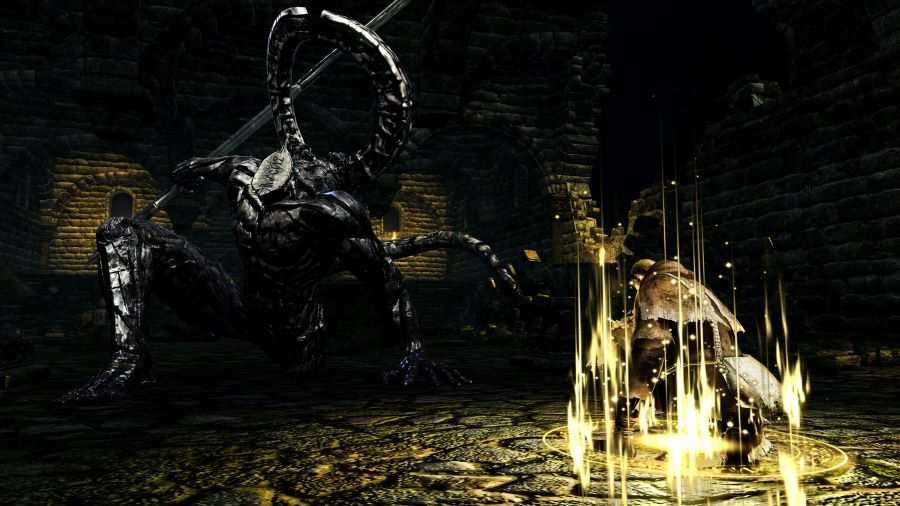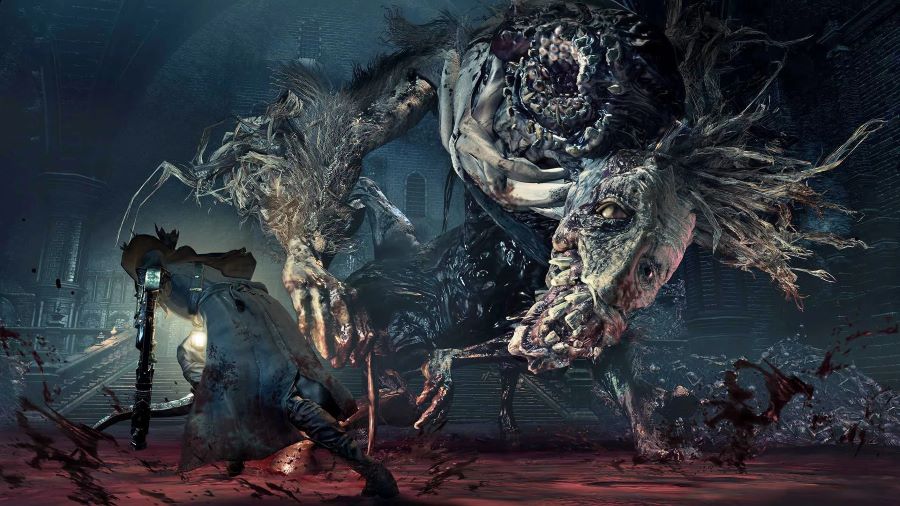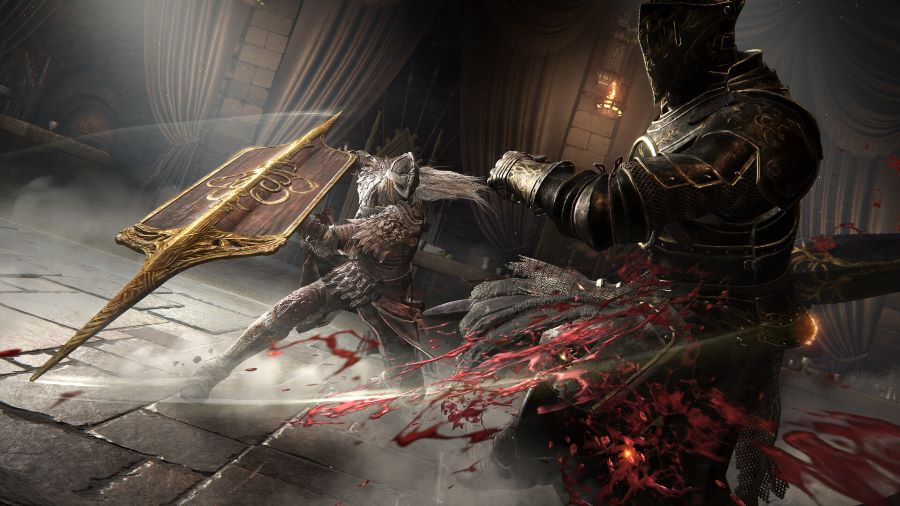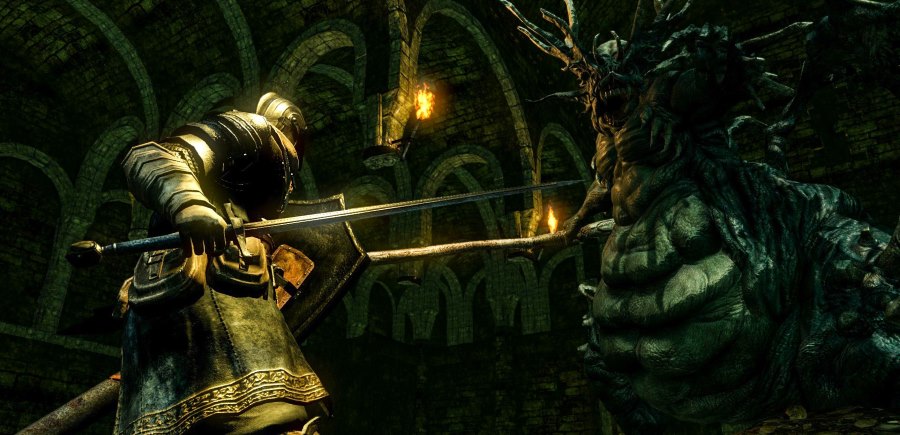There are two main ways to avoid damage in FromSoftware’s Soulsborne games. The first and easiest method is to use a piece of gear like a shield or weapon to block incoming attacks. The second and riskier method is by utilizing the invincibility frames provided by specific movements (usually by dodging). There are other ways to avoid getting hit in these games (such as parrying), but blocking and dodging are the most consistent methods found throughout FromSoftware’s action RPG titles. While both methods are viable, recent games like Elden Ring have emphasized precise dodging over cautious blocking.
Demon’s Souls and Dark Souls’ cramped battles encourage first-time players to block

Demon’s Souls and Dark Souls pioneered what would become known as the Soulsborne genre and served as litmus tests for FromSoftware’s grand RPG plans. Gameplay elements like covenants, a surplus of healing items, and different checkpoint systems were still unrefined, as was the technology used to implement these ideas. These limits in technology prompted the developers to make compromises which include limiting the number of enemies and the size of the explorable areas.
Enemies in early FromSoftware games tend to be fewer in number and less aggressive than those found in later titles. While this was done to prevent the games from crashing, it also made it much easier to deal with adversaries. The only times Dark Souls players have trouble blocking attacks is if they are beset by enemies with continuous attacks like the Bonewheel Skeletons or are fighting an enemy that does strong poise damage like the Titanite Demon. Considering the timing for blocks is much more forgiving than dodging, many first-time players relied on their shield more than their dodging reflexes.
On the other side of the spectrum, more advanced players began to realize the benefits of dodging over blocking. While dodging requires pinpoint timing, the invincibility frames provided would prevent all damage from an attack at the cost of a fraction of the stamina it would take to block the same strike. Lower equipment loads would increase the number of invincibility frames, which is why more players started stripping down their characters to make use of the games’ more powerful dodges.
Bloodborne became the tipping point for dodge rolling

While dodging was present again in Dark Souls 2, it wasn’t until Bloodborne that FromSoftware really leaned into the mechanic. By centering Bloodborne’s gameplay loop around aggression and quick movements, all players were forced to adopt the dodge as a means of avoiding damage. The learning curve proved steep for some players, but it eventually led to more people loving Bloodborne and adopting the dodge into their playstyles in other FromSoftware games.
Bloodborne is also one of the games where FromSoftware started to implement more enemies with area-wide attacks. While Demon’s Souls and Dark Souls have their fair share of foes with these attacks, Dark Souls 2, 3, and Bloodborne saw a dramatic increase in enemy moves that could not be blocked without repercussions. Dark Souls 2’s Ancient Dragon breathes fire on the ground, covering a large area that must be avoided. Bloodborne’s Lady Maria has a second phase that begins with an area-of-effect blood explosion that deals damage to anyone close by. Many of these attacks deal more than just physical damage; they can also inflict status ailments that must be avoided instead of blocked. This practice would continue in Dark Souls 3, which saw elements of Bloodborne get implemented into it to make for a faster, more kinetic game.
Elden Ring strikes a balance between blocking and dodging

Not counting Sekiro: Shadows Die Twice (a game that, according to director Hidetaka Miyazaki, is not a Soulsborne title), FromSoftware’s latest Soulsborne encourages players to adopt dodging as the de facto method for avoiding damage. Enemies in Elden Ring are fast and can either swarm the player with their vast numbers or overwhelm them with their large size. Thanks to the advancements in technology, FromSoftware was able to create large open spaces that house all sorts of dangers. To compensate for the increased space, the developers seem to have doubled down on the number of enemy attacks that cover a wide area; attacks which (you guessed it), are better dodged than blocked. One iconic example is Malenia’s Scarlet Aeonia attack, which summons a giant Scarlet Rot flower that explodes and leaves a mist that both damages and inflicts Scarlet Rot on whoever enters it.
But there is a silver lining. In increasing the number of wide-reaching enemy attacks, FromSoftware has also been adding ways for players to reliably block them. Greatshields such as the Verdigris Greatshield have high elemental resistances on top of their high physical damage negation. When coupled with items like the Ironjar Aromatic that increase damage negation, players can effectively tank attacks that would otherwise kill them. This method is sometimes favorable over dodging as well, as wide-reaching attacks tend to clip those who perform a mistimed evade.
Though it may seem like blocking is a thing of FromSoftware’s past, the developers know that some players prefer a tankier method of play and have included more defensive options to complement the standard block. So, the next time you see a summonable ally in Elden Ring wearing a hulking suit of armor and holding a greatshield, maybe consider giving them a try instead of another dual-wielding katana user.





